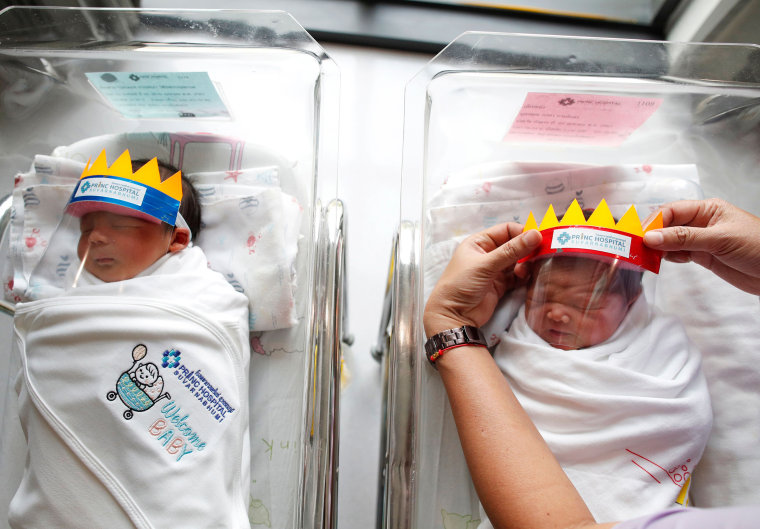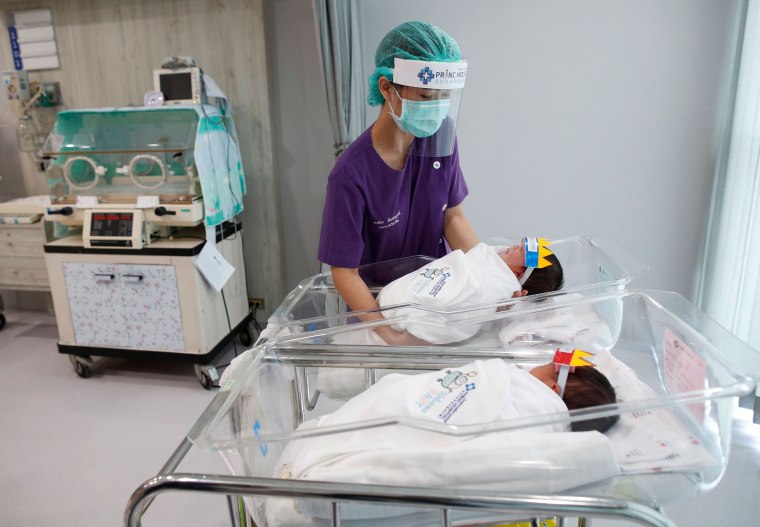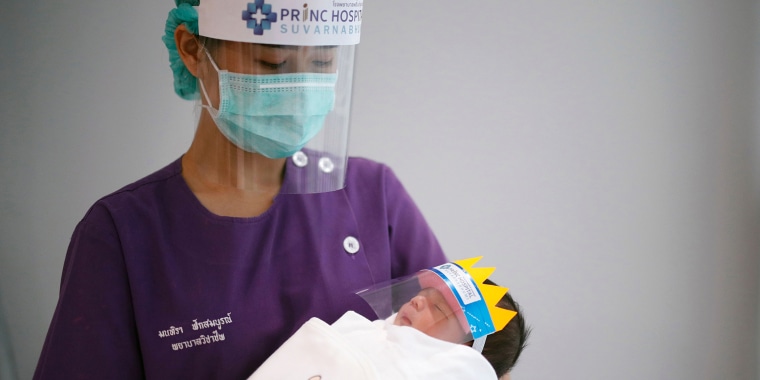As the coronavirus pandemic continues to sweep the globe, photographs show how one hospital in Thailand is working to protect newborns from the disease.
Pictures from the Princ Hospital Suvarnabhumi in the Samut Prakan province of Thailand show babies wearing face shields. The shields, typically worn by nurses and doctors, are a form of personal protective equipment (PPE) and have a fun touch — they've been decorated with blue and pink crowns.

Other photos from the hospital show nurses wearing similar face shields, along with surgical masks and standard scrubs.
Shan Soe-Lin, a lecturer in global affairs at Yale University and trained immunologist who spoke to TODAY earlier in April about the efficacy of face coverings, said she had a "hard time imagining how full face shields would help newborns" since hospital caregivers would be masked and many hospitals have changed their visitor policies to protect newborns and other hospital patients from the spread of COVID-19.
One small study indicated that if mothers have COVID-19, they may pass it on to newborn children. Soe-Lin said the best thing parents could do to keep children safe from the virus is to continue to follow best practices.
"Newborn parents need to be especially careful with the hand washing and social distancing, mainly to ensure that they stay healthy," she said.

Some research indicates children are less likely to suffer severe symptoms if they are infected with the virus.
“When it comes to newborn babies, (we) don't know a ton, yet ... We have very isolated reports of newborn babies who have gotten it,” Dr. Rosemary Olivero, division chief for infectious disease at Helen DeVos Children’s Hospital in Grand Rapids, Michigan, told TODAY in early April. “While we do not have a large body of data to tell us what to expect for newborns, the reports we have received so far suggest that COVID-19 has been mild for babies.”
Research shows children will experience the same symptoms as adults, possibly on a lesser scale, and may also experience gastrointestinal distress, a symptom not typically reported by adults who have contracted the virus.

However, children are more likely to be asymptomatic carriers of the disease. New guidelines from the Centers for Disease Control and Prevention say children 2 years old and older should wear cloth face coverings in public to prevent the transmission of the virus.
"I do think it's important for parents to mask their children while they are outside," Soe-Lin said. "Children have the highest chance of being asymptomatic carriers, and so masks are critically important for them as well."
While guidelines do not recommend masking very young children, experts recommend draping a blanket or other covering over a baby car seat or stroller while in public to protect against the respiratory droplets that spread the virus.
